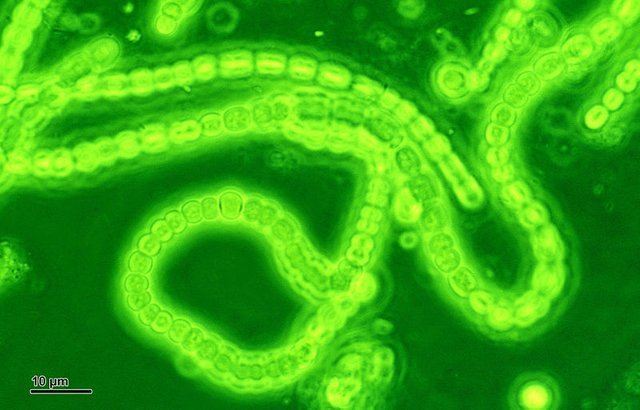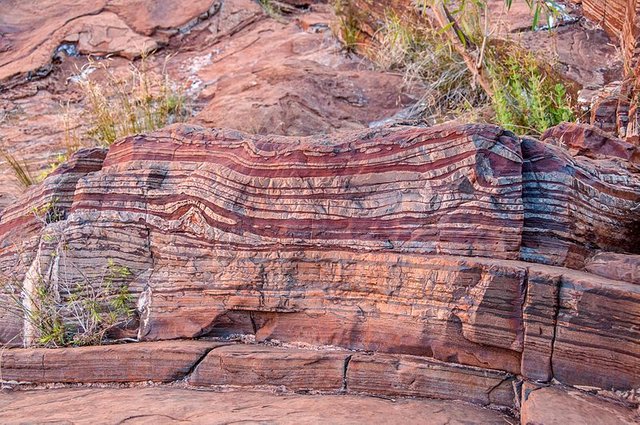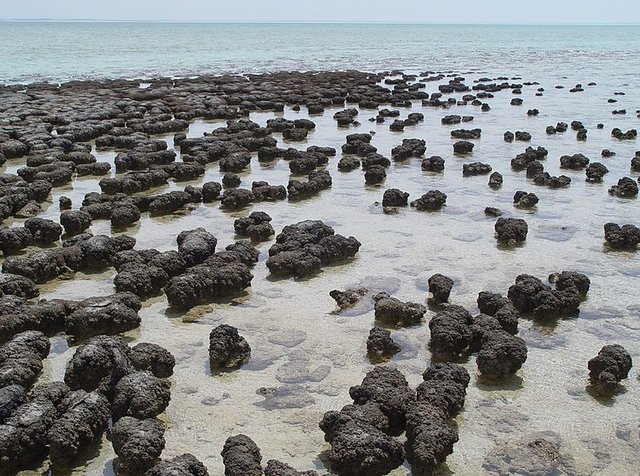Life's Role in Geology Part 2: A Cataclysm Unequaled
Two and a half billion years ago, the most destructive cataclysm in Earth's history began. It killed the overwhelming majority of life on the planet. It fundamentally altered the way that geology itself worked. It entirely changed how weather and climate worked. It was the Great Oxygenation Event.

Cyanobacteria. [Image source]
The Great Oxygenation Event was caused by cyanobacteria. These little bacteria were the first organisms to figure out the trick of photosynthesis, and boy did they run with it. Oxygen was actually toxic to the vast majority of organisms (largely bacteria) alive at the time, so not only did the cyanobacteria get a ton of cheap, abundant energy, they also killed off just about all of their competition.
The Great Oxygenation didn't happen all at once. In fact, it took a long, long time- the first oxygen producing bacteria likely appeared as much as a billion years before the Great Oxygenation event reached crisis stage. The important thing about oxygen is that it is really, really reactive. That's exactly what makes it so effective for fueling life, but it also meant that, well, everything it met wanted to react to it.
This resulted in massive amounts of chemical weathering. Iron used to just be everywhere on the surface, for instance. Whenever oxygen would encounter it, often floating freely in the ocean, it would result in an oxidizing reaction, producing iron oxide. That iron oxide would then sink to the bottom of the ocean as fine particulates. This would actually produce deposits known today as banded iron formations, as the iron oxide particulate deposition rate would fluctuate with oxygen availability. Those fluctuations might have been seasonal, or they might have followed some other pattern, but they resulted in beautiful striped rocks which can make for gorgeous jewelry.

Banded iron formation. [Image source]
Iron wasn't even close to the only element or compound oxygen reacted with, either- it also reacts with quite a few others, largely in the form of reducing minerals then common on the surface. Silica minerals especially like oxygen atoms- 90% of our planet's rocky mass is actually oxygen. Oxygen really likes to be bound into rocks. Oxygen levels couldn't really kick off until they'd chemically weathered, or reduced (hence the name) these minerals that would readily react with them on the surface.
Once those minerals were reduced, however, boy did oxygen levels kick off. It likely only took a few millennia to get oxygen levels near to present day levels. Soon after, the first fossils begin appearing. Known as stromatalites, they're thin mats of biofilm (matted microorganisms) that trap particles of detritus on top of them, whereupon the microorganisms then begin to grow over them, eventually creating large layered mounds. They actually still exist today, but only in Shark Bay in Australia, where it's too salty for animals- larger creatures love to eat and accidentally disturb the fragile biofilms.

Modern stromatolites in Shark Bay. [Image source]
The last big step? Snowball Earth. I've already talked about that in a post all on its own. In short, it was the freezing over of the whole damn planet.
The Great Oxygenation is undoubtedly the third most intense event to ever happen to Earth, after only the formation of the Moon and the formation of the Earth itself. It might have been a slow moving event, but it utterly reshaped the way our biosphere, lithosphere, atmosphere, and hydrosphere worked. It didn't just have drastic effects on the world, it changed the rules that the world itself operated by. It was a paradigm shift the likes of which we should hope we never see again.
*************************************************
Bibliography:
https://en.wikipedia.org/wiki/Banded_iron_formation
https://en.wikipedia.org/wiki/Great_Oxygenation_Event
https://en.wikipedia.org/wiki/Oxygen_cycle
https://en.wikipedia.org/wiki/Geological_history_of_oxygen
My prior geology classes and education
Very cool! Great information. I have always had a soft spot in my heart for geology. I have this thing for collecting cool stones.
Would you be willing to take a look at a stone every once in a while on your identifying series posts?
BTW, what is your favorite stone? Mine changes with my mood, but my standby has always been crystal quartz. I am drawn to those for some reason! I absolutely adore them, lol
Absolutely, posting the new identification thread right now!
My favorite stone? Ugh, you had to ask a difficult one. Ummmm... columnar basalt, maybe?
Easy questions are for parrots ;)
img credz: pixabay.com
Nice, you got a 4.0% @peaceandlove upgoat, thanks to @mountainwashere
Want a boost? Minnowbooster's got your back!
This post has received a 2.07 % upvote from @buildawhale thanks to: @mountainwashere. Send at least 1 SBD to @buildawhale with a post link in the memo field for a portion of the next vote.
To support our daily curation initiative, please vote on my owner, @themarkymark, as a Steem Witness
This wonderful post has received a bellyrub 1.77 % upvote from @bellyrub.
Congratulations @mountainwashere! You have completed some achievement on Steemit and have been rewarded with new badge(s) :
Click on any badge to view your own Board of Honor on SteemitBoard.
For more information about SteemitBoard, click here
If you no longer want to receive notifications, reply to this comment with the word
STOPWhere there is love there is life.
- Mahatma Gandhi
This reply seems a little spammy- people appreciate it when you leave comments that seem to reflect the actual content of the piece.
This post has received a 5.67 % upvote from @booster thanks to: @mountainwashere.
For more information, click here!!!!
The Minnowhelper team is still looking for investors (Minimum 10 SP), if you are interested in this, read the conditions of how to invest click here!!!
Congratulations @mountainwashere, this post is the seventh most rewarded post (based on pending payouts) in the last 12 hours written by a User account holder (accounts that hold between 0.1 and 1.0 Mega Vests). The total number of posts by User account holders during this period was 2598 and the total pending payments to posts in this category was $3205.78. To see the full list of highest paid posts across all accounts categories, click here.
If you do not wish to receive these messages in future, please reply stop to this comment.